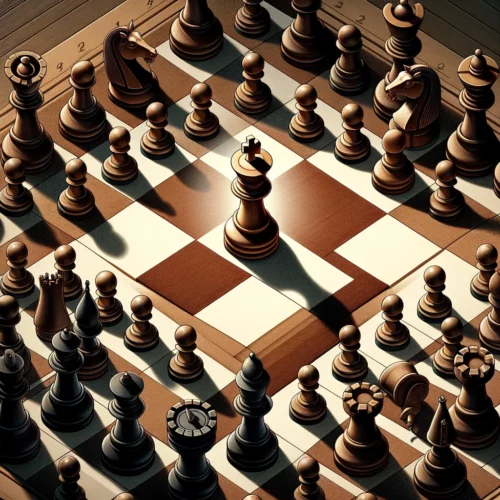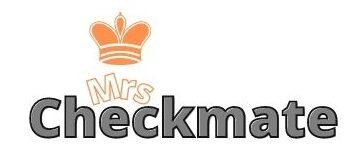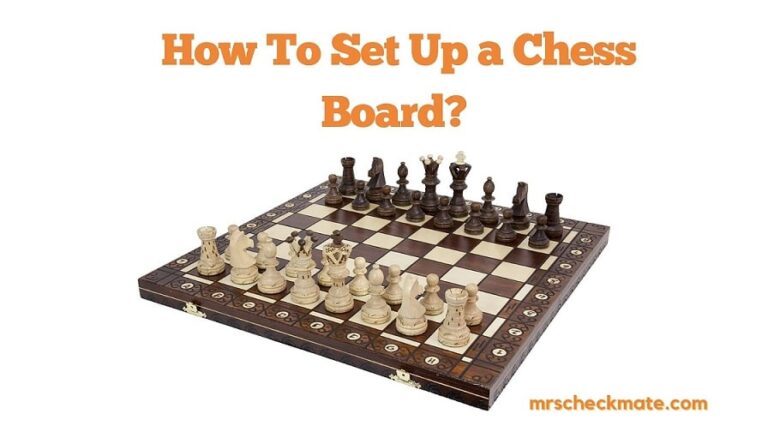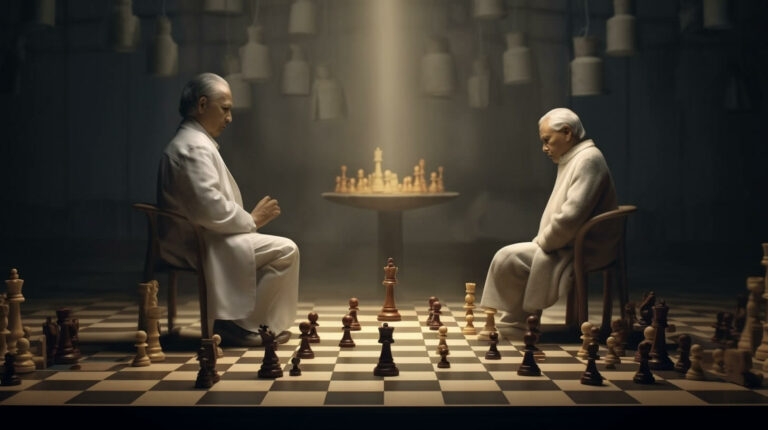How to Get Out of Check in Chess? (Secret Method)
In the strategic world of chess, finding yourself in a ‘check’ situation can be a critical moment. “How to Get Out of Check in Chess” is a comprehensive guide designed to arm players with essential strategies and tactics.
This article delves into key concepts such as chessboard awareness, understanding the importance of the king’s safety, and mastering defensive maneuvers. We explore various scenarios where a king is threatened and provide step-by-step instructions on how to effectively respond to these threats.
Whether you’re a beginner or an experienced player, this guide is packed with tips on how to navigate out of check, utilizing pieces like knights, bishops, and queens for defense. Enhance your chess game by learning the art of escaping check, a fundamental skill for any chess enthusiast.
So, How to Get Out of Check in Chess?
| Key Takeaways |
|---|
| Understanding the importance of escaping check promptly and efficiently to avoid checkmate |
| Knowing the three primary strategies: moving the king, blocking the check, and capturing the threatening piece |
| Recognizing the risks and implications of each defensive move on the overall game |
| Learning to anticipate checks and prepare accordingly for defensive maneuvers |
| Emphasizing the significance of practice and game experience for mastering check evasion |
This table neatly organizes the critical points of the article for easy reference and understanding.
What is ‘Check’ in Chess?
Definition and Significance of Being in Check: The moment when a King is directly threatened by an opponent’s piece is what chess players refer to as being in “check”. It’s a siren call, warning that immediate action is required. According to the basic chess rules, failure to respond to a check might swiftly escalate to checkmate, which spells the end of the game.
Importance of Responding to a Check: Responding to a check is not merely an obligation; it’s a survival instinct in the chess world. Every chess enthusiast understands that an unchecked king can lead to an unavoidable downfall.
Strategies for Getting Out of Check
When you find your king under threat, there are three primary strategies to deploy:
- Moving the King
- Blocking the Check
- Capturing the Threatening Piece
Let’s unfold these strategies with the insight and finesse worthy of mrscheckmate.com, the definitive chess blog for both seasoned players and those just setting their pawns on the chess board.

Detailed Analysis of Each Strategy
Moving the King:
This is often the go-to move; relocating your monarch to a safer square. However, it’s not just any square; it’s the one that promises no immediate checks or threats.
- Identifying Safe Squares:
- Ensure no enemy piece can move to that square on the next turn.
- Look out for potential skirmishes or lined-up attacks after the move.
- Understanding the Limitations and Risks:
- Moving the king might expose him to future threats.
- It can limit the king’s mobility, especially in the context of castling, which requires an unmoved king and rook.
Blocking the Check:
Sometimes, using another piece to shield your king is the smarter play. Here’s how to make that decision:
- Choosing the Right Piece for Blocking:
- Analyze each piece’s value and role before sacrificing it to a block.
- Consider if interposing might develop the piece or improve your position.
- Assessing the Impact on Overall Game Strategy:
- Blocking might be a temporary fix that defers a threat instead of eliminating it.
- A block can create weaknesses in your pawn structure or leave other pieces unprotected.
Capturing the Threatening Piece:
When the attacking piece ventures too close, sometimes it’s within capturing grasp. This can be a significant tide turner.
- When It Is Advantageous to Capture the Attacking Piece:
- When the attacker is worth more than the defender.
- When the capture helps you gain a positional or material advantage.
- Risks Associated With This Strategy:
- Ensure that capturing doesn’t leave another piece en prise or expose your king to a follow-up check.
- Be wary of tactical traps where capturing might lead to a devastating counterattack.
Examples and Illustrations:
- Moving the King:
- Hypothetical Situation: Your king is checked by a rook along an open file. The best move is to slide the king over one square, remaining off the file and out of harm’s way.
- Blocking the Check:
- In Game Example: A bishop checks from afar. A knight jumps in the way, not just blocking but also attacking a key square.
- Capturing the Threatening Piece:
- Chess Puzzle Scenario: A queen checks your king with no supporting piece. Your rook, aligned with the queen, takes her out, and turns the tables.
For each scenario, you must visualize the board, pieces, and possible outcomes—sharpening your tactical vision for real-life games.
Stay tuned for the next part, where we’ll dive into advanced considerations and masterful moves to keep your king safe and your game strong.
Advanced Considerations
Protecting your king from a check is not just about making a single move to resolve the immediate threat. It’s a complex dance—one that ties in closely with overall chess principles and tactics. Here, we’ll discuss some advanced concepts to further enhance your check defense skills.
Understanding the Implications of Each Move for the Overall Game Strategy:
- Every maneuver has consequences—think two, three, or more steps ahead.
- Escaping check might segue into a mighty counterattack or a deft creation of a stronghold for a future offensive.
How to Anticipate Checks and Prepare in Advance:
- Pattern Recognition – Regularly go through chess puzzles to familiarize yourself with check patterns.
- Board Control – Practice maintaining control over key squares, especially the ones around your king.
- Piece Coordination – Ensure that your pieces work harmoniously, each backing the other up, to minimize vulnerabilities to checks.
This aspect of strategy doesn’t just improve your defensive play; it improves your chess thinking, making it richer, deeper, more impenetrable. Anticipation is your shield, and planning is your sword, as you navigate the minefield of threats on the chessboard.

Avoiding Checks:
- Controlling the center and contesting vital squares can dissuade the opponent from checking you in the first place.
- Stay aware of the opponent’s movement and possibilities for checking your king. You shouldn’t be surprised by a check—it should be something you saw coming and have planned for.
Counterattacks and Sacrificial Moves:
- Sometimes, the best defense is a good offense. Anticipate opponent checks and lay traps to launch a counterattack as soon as they commit.
- Sacrificial moves, such as a pawn push to divert an attacking piece or a gambit that lures your opponent into overextending, can be effective strategies when you’re in check.
Castling as a Preventative Measure:
It’s worth noting that castling is not just a development move but also a king safety maneuver. Execute it early when possible—before checks begin cascading in. Remember, castling is illegal if:
- The king is in check.
- The king passes through a square that is under attack.
- The rook involved has already moved.
Understanding these lined-up factors helps cement knowledge about why castling is essential and how it relates to overall safety strategies, including check defense.
Conclusion of Advanced Considerations
- Key takeaway? Anticipate. Prepare. Counterattack. Don’t merely play move-to-move—strategize multiple sequences ahead.
- Practice and game experience are invaluable. It’s the arena where these advanced considerations are tested and perfected.
As we wrap up this deep dive into evading check, remember that chess is a battle of wits and foreseeing checks is an integral skill. The finesse, the anticipation, and the shrewd maneuvers all stem from a rich understanding of chess principles and patterns.
Final Conclusion
In the strategic cosmos of chess, overcoming the challenge of being in check is paramount to the craft of the game. Through perseverance, tactical acumen, and vigilant foresight, the art of escaping check morphs from daunting chore to a testament of one’s growing prowess. Embrace these moments as opportunities, not obstacles, on your path to chess mastery.
Remember – a check is but a question asked by your opponent, and with every strategy outlined herein, you possess multiple potent answers. May your gameplay be as richly threaded as the narrative of chess itself – a saga of triumph, calculation, and the indomitable human spirit behind every move.
Thank you for joining this expedition through the intricacies of escaping check. Let these principles and practices resonate in every roll of the pawn and sweep of the queen. Continue your pursuit of chess excellence with the understanding that defensive play is as noble and crucial as the boldest offense. For more mastery and insights on the game, ensure that Mrs. Checkmate is your companion on this journey of checkered conquests.
Dive deeper, play smarter, and keep your king confidently in play. Onward, to victory and beyond!
Frequently Asked Questions (FAQ)
Q1: Can I ignore a check in chess? A1: No, you cannot ignore a check in chess. It is a rule that you must respond to a check on the immediate next move, either by moving the king, blocking the threat, or capturing the attacking piece.
Q2: What happens if I cannot escape a check? A2: If you cannot escape a check, it is a checkmate, and the game is over. This is the ultimate goal of chess—to checkmate the opponent’s king.
Q3: How do I know which piece to use when blocking a check? A3: When deciding which piece to use to block a check, consider the value and utility of the pieces you can use for blocking. It’s typically better to block with a less valuable piece, unless blocking with a more valuable piece leads to a significant positional advantage or counter-threat.
Q4: Is capturing the checking piece always the best option? A4: Not necessarily. While capturing the threat can be advantageous, you must also assess the board for potential traps or whether the capture might leave you in a worse position due to counters.
Q5: Can a king put another king in check? A5: No. Kings cannot be moved into a square that is one move away from the opponent’s king. This is known as ‘king-to-king’ and is an illegal move as it would leave the moving king in check. Learn more about this here.
Q6: How can castling help me when I’m in check? A6: Castling can get your king to safety and connect your rooks. However, it is not a move you can make in response to a check. It must be done preemptively, when neither the king nor the rook has moved, and there can be no threat to the squares the king crosses or lands on.
Q7: How important are opening principles in avoiding checks during the game? A7: Opening principles are crucial for avoiding checks. Developing your pieces early, controlling the center, and ensuring the safety of your king, often through castling, can deter checks and threats during the early game. Check out more initial tactics here.
Q8: Is it wise to bring my queen out early to prevent checks? A8: Bringing your queen out early could make her a target and potentially weaken your position. Instead, focus on developing your minor pieces (knights and bishops) to create a solid foundation that naturally limits your opponent’s ability to check your king effectively.
Q9: How can I practice avoiding checks? A9: Practice can be done through solving chess puzzles, playing practice games focused on defensive maneuvers, reviewing and analyzing games (your own and others’), and perhaps even engaging in training sessions with a chess coach or using software that simulates defensive scenarios.
Remember to make the most of the resources and advice offered at Mrs. Checkmate. With these tools at your disposal, checks will become less of a threat and more of a challenge to your ever-improving strategic response.






